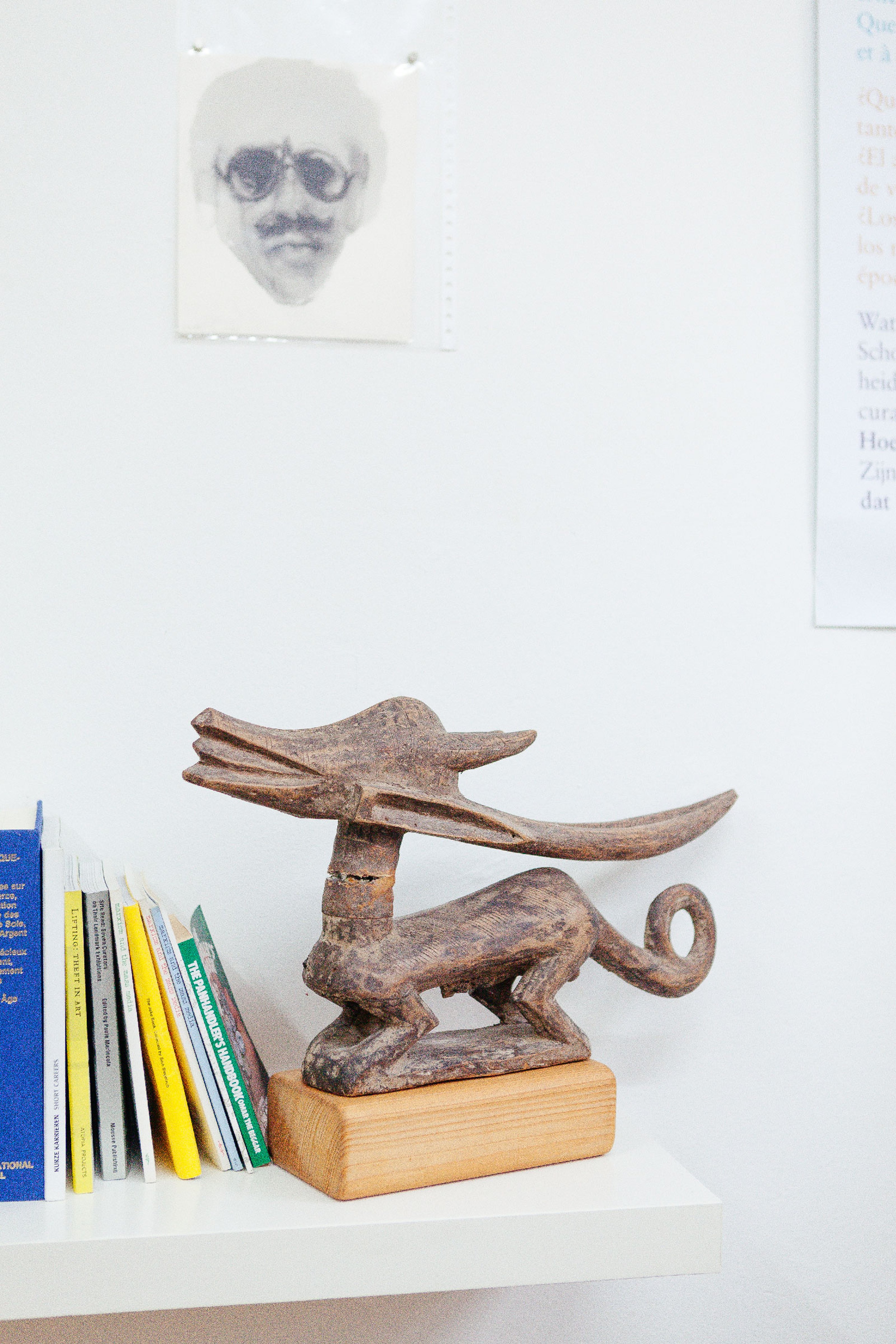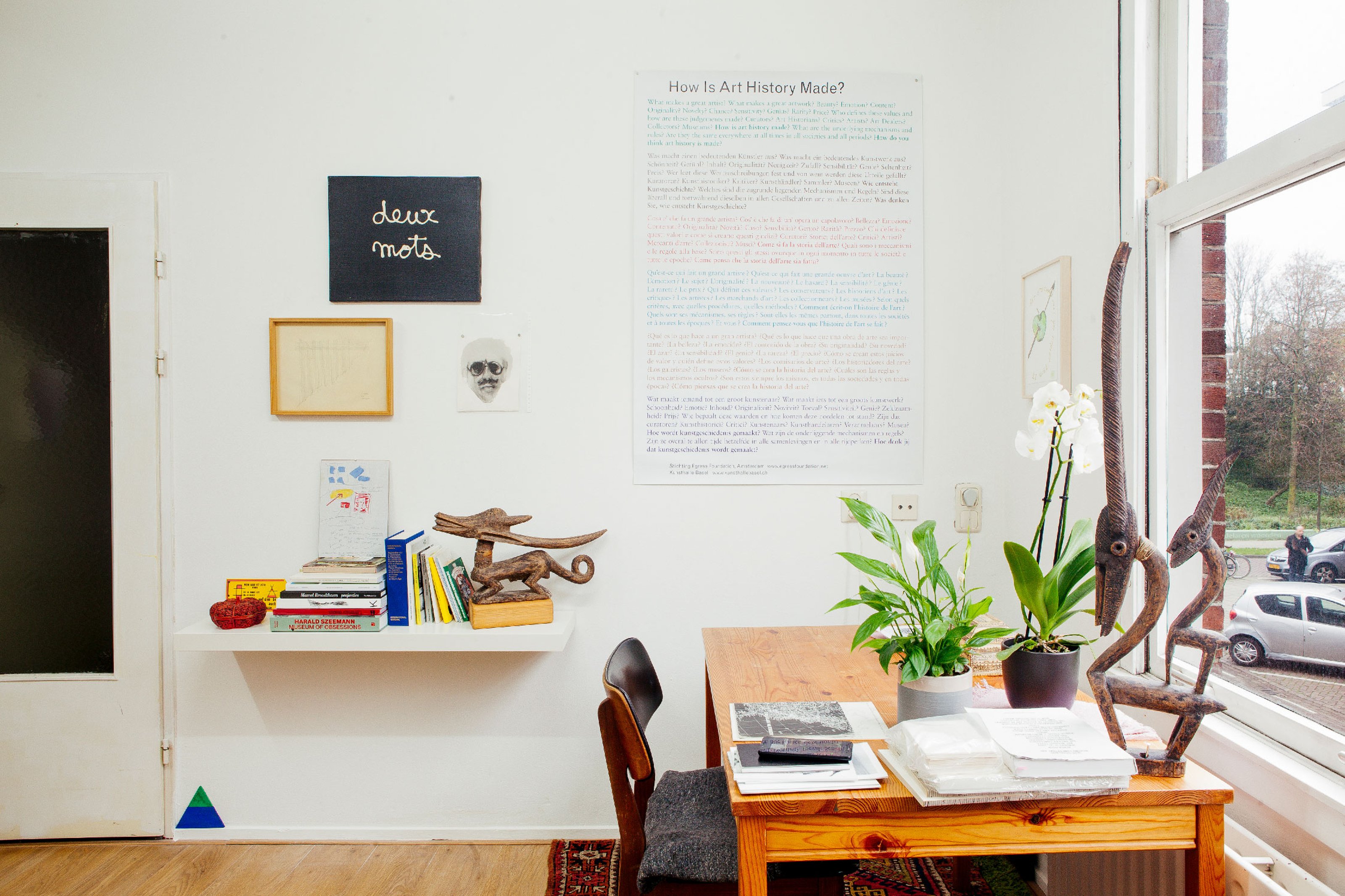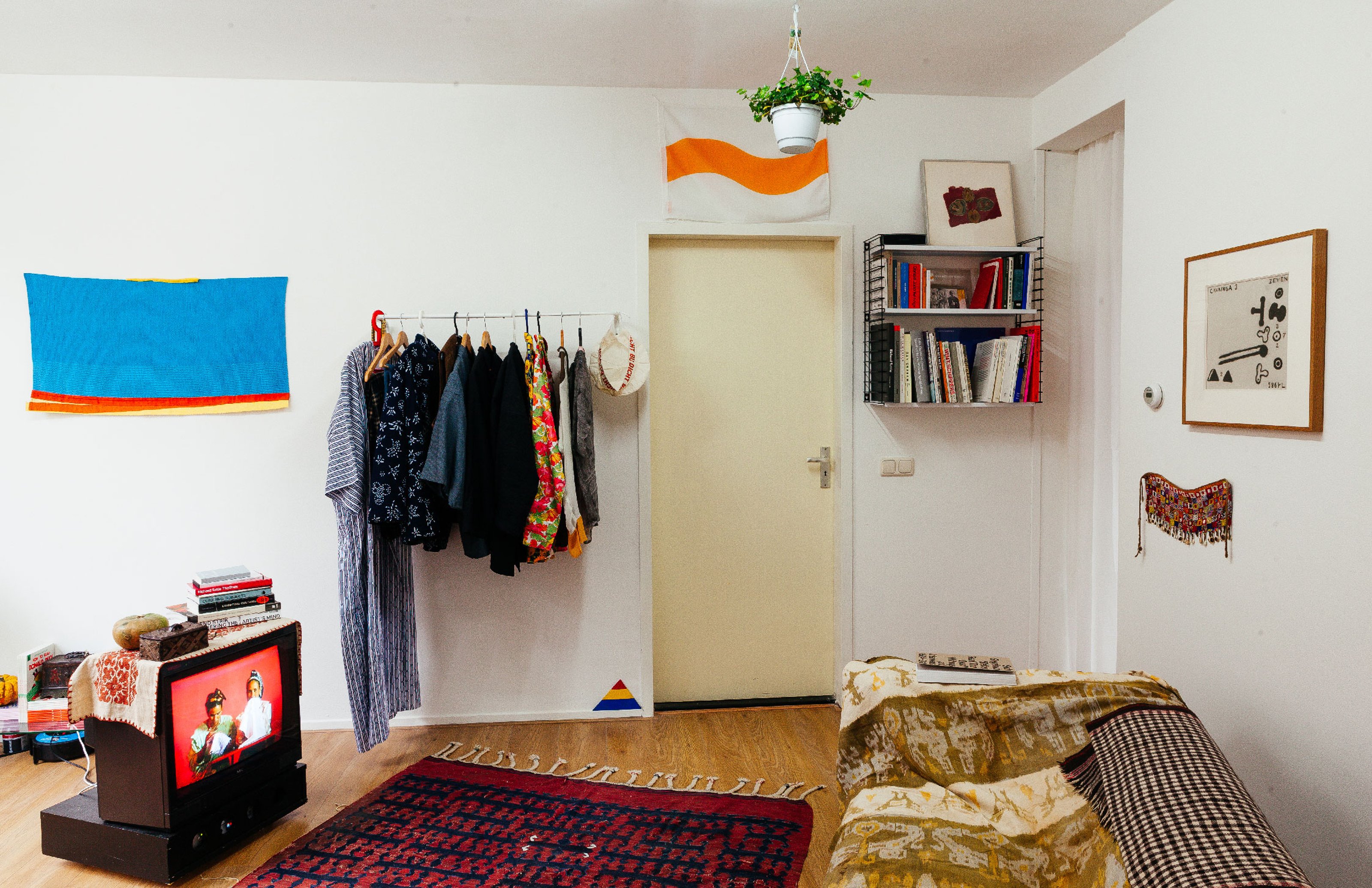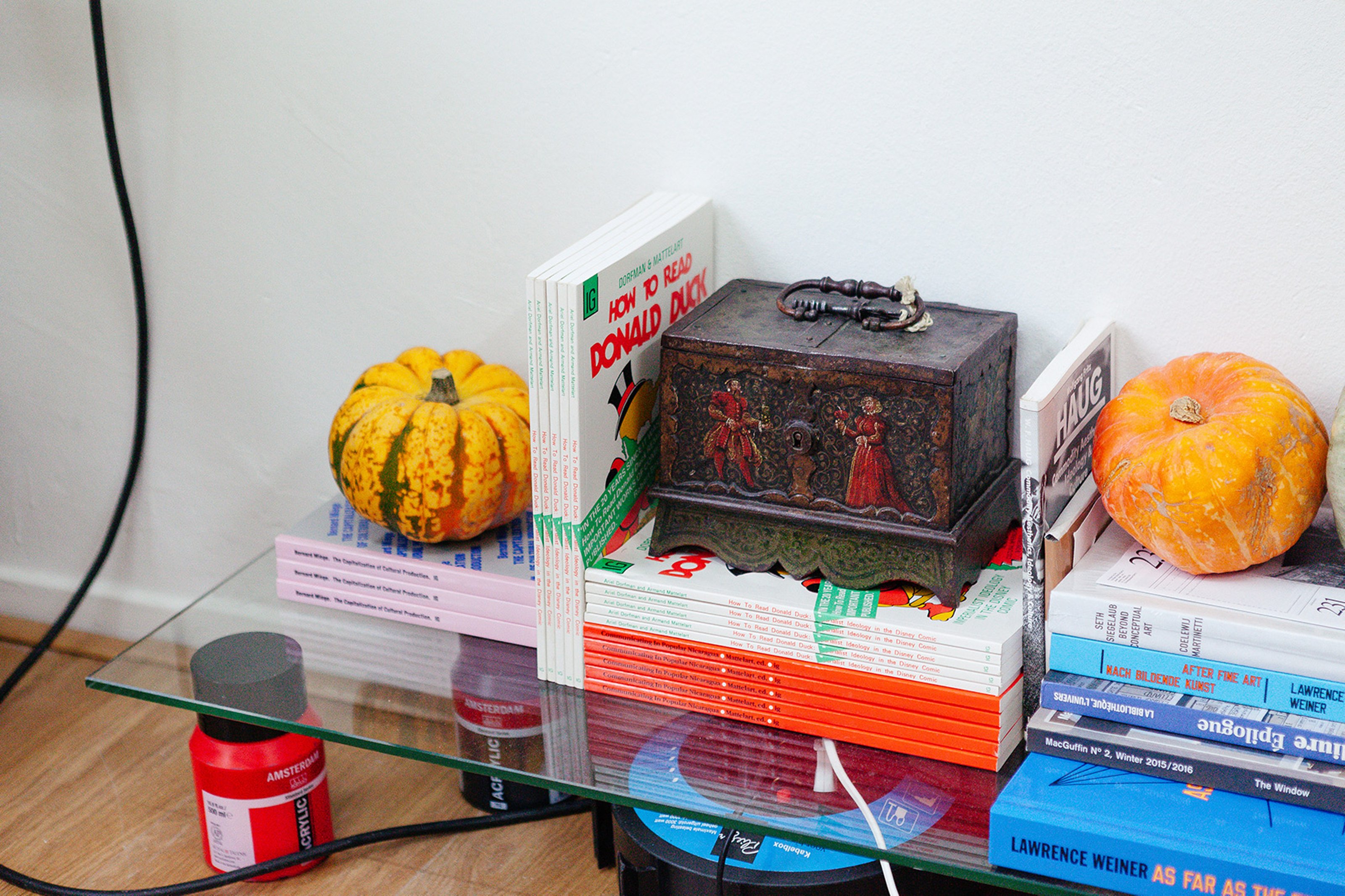
When the going gets tough, even Tinder can be used in the name of art, it seems.
As the coronavirus pandemic has forced arts institutions across the globe to shutter their doors, one man has been working to keep live art shows going, albeit at a smaller scale than the norm. Last year, Amsterdam-based young curator and artist Diego Diez opened Tilde, an art space named after the characteristic accent of his homeland, Spain. What sets Tilde apart from other galleries is that it is housed in the small living room of Diez’s flat.
Tilde’s latest exhibit, The Stichting Egress Foundation Salon, is a recreation of the living room of the late art dealer and curator Seth Siegelaub and his partner, the art historian Marja Bloem. With the Salon drawing to a close mid-month, Collecteurs caught up with Diez to get the scoop on what it’s like to host a gallery in your very own living room, as well as some of the inventive tricks he employed to draw viewers to his space.
Collecteurs: What is your personal connection to Marja and Seth? How did you come to recreate their living room at Tilde?
Diego Diez: I moved to The Netherlands to study in the summer of 2015, so I guess—like many people in my generation—I was really touched by the retrospective exhibition on the work of Seth that was organized at the Stedelijk at the end of that year. I never met Seth, but, a few years later, while doing research about Stanley Brouwn in 2017, I found what seemed to be Marja’s address, and I sent her a letter joking about her collection of boxes and how in each box there was maybe a card that was a work of conceptual art. She replied by email very kindly that most of the conceptual art collection and archives were donated to the MoMA. She also mentioned that we would meet soon.
A few weeks later, we went on an amazing trip together with [the art historian] Luuk Hoogewerf to Ghent, where we visited an amazing exhibition by Medardo Rosso and then we went to the Herbert Foundation, where Daniel Buren was giving a talk and Marja very kindly introduced him to us.
Since then, we have been meeting sporadically, going on trips and chatting about the things that are happening and not happening in Amsterdam over a glass of tea or glühwein. During one of these conversations, talking about the recently published anthology of Seth’s writings, Better Read Than Dead, and the amount of books that Seth published that she still had, we thought about a way of creating a platform for showing and selling these.
As I did not meet Seth, I thought this was interesting, but I also wanted to do something involving Marja, showing aspects also of her career as a curator at the Stedelijk or aspects that were more part of her collection. That is when I proposed the impossible: to recreate her attic living room within the living room of a student house. To this, I remember she responded very positively and after that, I just did a few visits to her house, where she would have different artworks, rugs, books, and anecdotes ready for me to bring to Tilde, where I installed it with full freedom and I took the chance to invite four younger artists that I felt could have relations to their collection.
Image left: Marlene Dumas, 1996, Seth as Groucho Marx (ink on paper); sculpture from Vanuatu.

(from left to right): Richard Tuttle, 1974, _2nd Coloured Triangle (_painted plywood, three parts); Ben Vautier, 1973, Deux mots (acrylic on canvas); Ruth Vollmer, 1977, Lines (pencil on paper); Lawrence Weiner, ca. 1998, Proposal for a drawing show (ink on paper); Marlene Dumas, 1996, Seth as Groucho Marx (ink on paper); sculpture from Vanuatu; poster about the project “How is Art History Made?”; Berend Strik, 2020, Seth (pencil on paper).
Collecteurs: What are some safety precautions you’ve had to take to host the Salon during the pandemic?
Diego Diez: When the show opened in November, it felt like the number of coronavirus cases was going down; in collaboration with Marja, I planned to share pumpkin soup with everyone that would come on Saturday and different cocktails mixed with ginger beer to everyone that would come on Sunday, based on what they would eat at this time of the year and what they liked to drink. Sadly, this was only possible on the first weekend, and as restrictions got tighter, I also decided to remove this part of the experience.
After that first open weekend, people have been coming by appointment and with masks. I bought enough, just in case some people would not bring their own, and I have also been equipped with hand sanitizer for the visitors, as it is an exhibition with a lot of printed matter.
Seeing as how there were many restrictions in the culture sector in The Netherlands, mine was one of the few spaces that were, somehow, still allowed to be open. Since it was located in my private room, I decided to push further the possibility of offering different ways for people to learn about the project and set appointments—and that is when I decided to open a Tinder account for the space, where I have been able to reach a completely different audience for the project and share the different aspects of this exhibition with them, at the same time allowing people a very exciting thing to do these days: leave their house.
Collecteurs: What are some moments that stand out to you in your experience of hosting Tilde in your living room for the past year?
Diego Diez: About the salon project, it has been really nice to have people over who met Seth and shared stories about his kindness and generosity, how he was an attentive listener and an amazing conversationalist. In this same project, one of my favorite moments was when Marja came over for the first time and she said, “It feels like home,” making me feel that I had achieved what I was looking for with the project.
In other exhibitions, something that really stood out was the attention that visitors paid to Moyra Davey’s during the opening of her show with Tim Neutel. It was the first time showing a work that demanded more time from the audience, and it was amazing how they would take turns to use the two headphones that were installed to listen to the work. Nobody left without seeing it all.
During another exhibition, when we were almost closing down and going to a bar around the corner, a couple that nobody knew arrived. Apparently, they saw the event on Facebook and decided to come and check it out. They were very impressed that there were people doing things like this in their houses and ended up buying a few drawings from the show, helping the artist a lot.

(from left to right): Hana Miletic, 2020, Materials (hand-woven textile including carrot orange mercerized cotton, daffodil yellow recycled polypropylene, indigo blue latex-covered cotton, lemon yellow recycled nylon, orange silk, pale yellow cotton-silk, sandstone orange Shantung silk, turmeric-and-onion-colored yellow organic cotton, turquoise organic cottolin, turquoise organic cotton, and vanilla organic silk noil); Rini Hurkmans, 2001, Nevertheless (video on loop); Olga Micińska, 2020, Garments (silk); Richard Tuttle, 1974, 1st Coloured Triangle (painted plywood, three parts); Rini Hurkmans, 2002, Flag of Compassion (cotton, unlimited edition, with certificate and button); Reinier Lucassen

Collecteurs: What are the pros and cons of hosting an exhibit in your living room?
Diego Diez: I really love hosting. I love every aspect of it, from thinking about the project to the last day of the show and wrapping up. I love having people over—artists, curators, or just anyone. I love offering coffee, tea, or maybe just a glass of water. I love when people maybe stay a bit longer, and it is lunch or dinner time, and we cook something together. I love to tell you how much I like the work of my friends I have shown, like Maria Nolla Mateos or Sara Milio, and how their work is connected to the work of more established artists they showed with, like Francisco de Goya y Lucientes or Laure Prouvost. I love the moments with the artists and the moments alone with the work.
The cons? When the work has to leave, but it is only for the best, because I love when the next one comes!
Collecteurs: What’s next for you and for Tilde? More projects like this?
Diego Diez: Tilde was born as a space to do quick projects showing upcoming artists with established artists. During my art education, I missed opportunities to show my work publicly, and I think it is in those moments where you discover things about your work that take you further. That is why, as I am mostly focused on showing younger artists, I decided to do quick exhibitions, and, in some way, that is what I will continue doing.
In the future, and before the summer—if everything works out—there will be a painting show with Gabriele Adomaityte, Rezi van Lankveld, and Wessel Rossen, as well as a carte blanche to fashion designer Baby Reni (Irene Ha). I hope to expand the project’s focus from contemporary art to touch on other aspects of contemporary culture. I hope that Tilde can become a space where anything can happen.
Image left: Books from International General and box from the collection of Marja Bloem.
The Stichting Egress Foundation Salon closes at the end of February. For more information on Tilde, visit tilde.space.